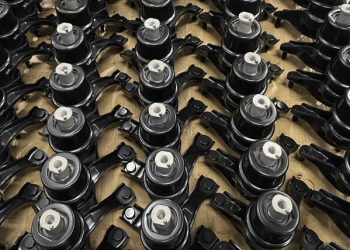Turf lines are defined as the distinct lines or patterns that are formed on sports fields and landscaping areas where the grass is cut in different directions or heights. These lines can be seen on soccer fields, baseball fields, golf courses, and even in residential lawns. Turf lines are formed when the grass blades are bent or pushed in a certain direction, creating a visual contrast between the light and dark areas.
Turf lines are formed through a combination of factors. The most common method is by mowing the grass in different directions or heights. This causes the grass blades to bend or lean in a certain direction, creating a visual effect when viewed from a distance. Another method is by using specialized equipment that can create patterns or designs on the grass. This is often seen in professional sports fields where logos or team names are displayed.
Turf lines are not just for aesthetic purposes. They also serve a functional role in sports fields and landscaping areas. In sports fields, turf lines can help players determine the direction of play and provide visual cues for positioning. In landscaping areas, turf lines can create visual interest and enhance the overall design of the space.
Factors Affecting the Disappearance of Turf Lines
While turf lines can add beauty and functionality to sports fields and landscaping areas, they are not permanent. Over time, turf lines can fade or disappear due to various factors. Understanding these factors is crucial in maintaining and preserving turf lines for longer periods.
One of the main factors that contribute to the disappearance of turf lines is natural wear and tear. As people walk or run on the grass, the constant foot traffic can cause the grass blades to become flattened or bent in different directions, eventually erasing the distinct patterns created by mowing. Additionally, equipment such as lawnmowers or sports equipment can also contribute to the wear and tear of turf lines.
Weather conditions also play a significant role in the disappearance of turf lines. Rain can cause the grass blades to become weighed down and lose their upright position, making the lines less visible. On the other hand, excessive sun exposure and high temperatures can cause the grass to dry out and become brittle, making it more prone to damage and breakage. Extreme weather conditions such as heavy rain or drought can also lead to soil erosion, which can further contribute to the fading of turf lines.
Soil type is another factor that affects the disappearance of turf lines. Different soil types have different water retention capacities, which can affect the health and growth of the grass. Sandy soils, for example, drain water quickly and may require more frequent watering to maintain the grass’s health. On the other hand, clay soils retain water for longer periods, which can lead to waterlogged conditions and root rot if not properly managed. These soil conditions can impact the overall health and appearance of the grass, including the visibility of turf lines.
Lastly, traffic is a significant factor that contributes to the fading of turf lines. Foot traffic from players or spectators can cause the grass blades to become flattened or damaged, making it difficult for turf lines to remain visible. Similarly, heavy equipment such as lawnmowers or maintenance vehicles can also cause damage to the grass and disrupt the formation of turf lines.
Understanding the Role of Weather in Turf Line Disappearance
Weather conditions play a crucial role in the disappearance of turf lines. Rain, sun exposure, and temperature fluctuations can all impact the health and appearance of the grass, including the visibility of turf lines.
Rainfall can have both positive and negative effects on turf lines. On one hand, rainwater provides essential moisture for the grass’s growth and health. However, excessive rainfall can lead to waterlogged conditions, which can suffocate the roots and cause root rot. This can weaken the grass and make it more susceptible to damage and breakage, ultimately leading to the fading of turf lines. Proper drainage is essential in managing the impact of rain on turf lines. Ensuring that the field or lawn has adequate drainage systems in place can help prevent waterlogging and maintain the health of the grass.
Sun exposure and temperature fluctuations can also affect the visibility of turf lines. Excessive sun exposure can cause the grass to dry out and become brittle, making it more prone to damage and breakage. This can lead to the fading of turf lines as the grass blades lose their upright position. Similarly, extreme temperature fluctuations, such as freezing temperatures or heatwaves, can stress the grass and impact its overall health and appearance. Proper irrigation and shading techniques can help mitigate the effects of sun exposure and temperature fluctuations on turf lines.
The Impact of Traffic on Turf Line Fading
Foot traffic and equipment use can have a significant impact on the fading of turf lines. As people walk or run on the grass, the constant pressure can cause the grass blades to become flattened or bent in different directions, making it difficult for turf lines to remain visible. Similarly, heavy equipment such as lawnmowers or maintenance vehicles can also cause damage to the grass and disrupt the formation of turf lines.
To minimize the impact of foot traffic on turf lines, it is important to implement strategies that distribute the traffic evenly across the field or lawn. This can be achieved by creating designated pathways or walkways that direct people away from high-traffic areas. Additionally, regular maintenance practices such as aerating and overseeding can help strengthen the grass’s root system and make it more resilient to foot traffic.
As one company who does turf delivery in Illawarra said, when it comes to equipment use, it is important to choose equipment that is appropriate for the specific needs of the field or lawn. For example, using a heavy-duty lawnmower on a delicate sports field can cause unnecessary damage to the grass and disrupt the formation of turf lines. Using equipment with adjustable settings can also help minimize the impact on turf lines by allowing for different mowing heights or patterns.
How Soil Type Affects Turf Line Disappearance
Soil type plays a crucial role in the disappearance of turf lines. Different soil types have different water retention capacities, which can affect the health and growth of the grass. This, in turn, can impact the visibility and longevity of turf lines.
Sandy soils, for example, have larger particles and drain water quickly. While this can be beneficial in preventing waterlogged conditions, it also means that sandy soils require more frequent watering to maintain the grass’s health. Without adequate moisture, the grass can become dry and brittle, making it more prone to damage and breakage. This can lead to the fading of turf lines as the grass blades lose their upright position.
On the other hand, clay soils have smaller particles and retain water for longer periods. While this can be beneficial in preventing drought conditions, it also means that clay soils are more prone to waterlogging if not properly managed. Waterlogged conditions can suffocate the roots and cause root rot, weakening the grass and making it more susceptible to damage and breakage. This can also lead to the fading of turf lines as the grass blades lose their upright position.
To manage different soil types and maintain turf lines, it is important to implement strategies that promote proper soil health and moisture balance. This can include regular soil testing to determine nutrient deficiencies or imbalances, as well as implementing proper irrigation techniques that take into account the specific needs of the soil type.
The Importance of Proper Turf Maintenance in Preventing Line Fading
Proper turf maintenance is crucial in preventing line fading and preserving the visibility of turf lines. Regular mowing and watering are essential in maintaining the health and appearance of the grass.
Regular mowing helps promote upright growth and prevents the grass blades from becoming flattened or bent in different directions. It is important to mow the grass at the appropriate height for the specific grass species and growing conditions. Mowing too low can stress the grass and make it more susceptible to damage and breakage, while mowing too high can create a dense thatch layer that can suffocate the grass and hinder its growth. Additionally, it is important to use sharp blades to ensure clean cuts and minimize damage to the grass.
Proper watering is also essential in maintaining the health of the grass and preventing line fading. It is important to water deeply and infrequently, allowing the water to penetrate the soil and reach the roots. This promotes deep root growth and makes the grass more resilient to drought conditions. Overwatering or underwatering can stress the grass and impact its overall health and appearance, including the visibility of turf lines.
Aerating and overseeding are additional maintenance practices that can help prevent line fading. Aerating involves creating small holes in the soil to improve air circulation, water penetration, and nutrient absorption. This helps alleviate compaction and promote healthy root growth. Overseeding involves spreading new grass seed over existing turf to fill in bare or thin areas. This helps maintain a dense and healthy turf, making it more resistant to damage and breakage.
Repairing damaged areas is also important in preventing line fading. If certain areas of the field or lawn have become worn or damaged, it is important to address these issues promptly. Read up on gardening tips and others for more information. This can include reseeding bare patches, applying topdressing to level uneven areas, or implementing proper drainage systems to prevent waterlogging.
The Role of Fertilizers and Nutrients in Turf Line Retention
Fertilizers and nutrients play a crucial role in turf line retention. Balanced soil nutrients are essential in maintaining the health and appearance of the grass, including the visibility of turf lines.
Different grass species have different nutrient requirements, so it is important to choose fertilizers that are appropriate for the specific needs of the grass. Nitrogen, phosphorus, and potassium are the three main nutrients that are essential for healthy grass growth. Nitrogen promotes leaf and stem growth, phosphorus promotes root development, and potassium helps with overall plant health and disease resistance.
It is important to apply fertilizers at the appropriate time and in the correct amounts. Over-fertilizing can lead to excessive growth and weaken the grass, making it more prone to damage and breakage. Under-fertilizing, on the other hand, can result in nutrient deficiencies and poor grass health. Regular soil testing can help determine nutrient deficiencies or imbalances and guide the application of fertilizers.
In addition to fertilizers, organic matter such as compost or organic mulch can also provide essential nutrients to the soil. Organic matter helps improve soil structure, water retention, and nutrient availability. It also encourages beneficial microbial activity in the soil, which can help break down organic matter and release nutrients for the grass.
Common Mistakes in Turf Maintenance That Can Lead to Line Fading
There are several common mistakes in turf maintenance that can lead to line fading. These mistakes can be easily avoided by implementing proper maintenance practices and being aware of the specific needs of the grass.
One common mistake is overwatering or underwatering. Both of these practices can stress the grass and impact its overall health and appearance, including the visibility of turf lines. Overwatering can lead to waterlogged conditions, suffocating the roots and causing root rot. Underwatering, on the other hand, can result in drought conditions and make the grass more susceptible to damage and breakage. It is important to water deeply and infrequently, allowing the water to penetrate the soil and reach the roots.
Improper mowing techniques can also contribute to line fading. Mowing too low can stress the grass and make it more susceptible to damage and breakage. Mowing too high, on the other hand, can create a dense thatch layer that can suffocate the grass and hinder its growth. It is important to mow the grass at the appropriate height for the specific grass species and growing conditions. Additionally, using sharp blades is essential in ensuring clean cuts and minimizing damage to the grass.
Using the wrong fertilizers or pesticides can also lead to line fading. Applying excessive amounts of fertilizers can result in excessive growth and weaken the grass, making it more prone to damage and breakage. Using pesticides without proper knowledge or guidance can also harm the grass and disrupt its overall health and appearance. It is important to choose fertilizers and pesticides that are appropriate for the specific needs of the grass and follow the recommended application rates.
Tips for Maintaining Bright Turf Lines for Longer Periods
Maintaining bright turf lines for longer periods requires a combination of proper maintenance practices and careful attention to detail. Here are some tips to help preserve the visibility of turf lines:
1. Use specialized equipment for line marking: Invest in specialized equipment that is designed for creating crisp and distinct turf lines. This can include striping kits for lawnmowers or line marking machines for sports fields. These tools can help create professional-looking lines that are more resistant to fading.
2. Choose the right grass species for your climate: Different grass species have different growth habits and maintenance requirements. Choose a grass species that is well-suited to your climate and growing conditions. This will ensure that the grass remains healthy and resilient, making it more resistant to damage and breakage.
3. Regularly monitor and adjust maintenance practices: Regularly monitor the health and appearance of the grass, including the visibility of turf lines. Adjust maintenance practices as needed to address any issues or concerns. This can include adjusting mowing heights, irrigation schedules, or fertilization rates.
4. Implement proper irrigation techniques: Proper irrigation is essential in maintaining the health and appearance of the grass, including the visibility of turf lines. Water deeply and infrequently, allowing the water to penetrate the soil and reach the roots. Avoid overwatering or underwatering, as both can stress the grass and impact its overall health.
5. Implement proper drainage systems: Proper drainage is crucial in managing the impact of rain on turf lines. Ensure that the field or lawn has adequate drainage systems in place to prevent waterlogging and maintain the health of the grass. This can include installing French drains, grading the area to promote proper water runoff, or using permeable materials for walkways or pathways.
6. Regularly aerate and overseed: Aerating and overseeding are important maintenance practices that can help prevent line fading. Aerating helps alleviate compaction and improve air circulation, water penetration, and nutrient absorption. Overseeding helps fill in bare or thin areas, maintaining a dense and healthy turf.
7. Implement proper fertilization practices: Proper fertilization is essential in maintaining the health and appearance of the grass, including the visibility of turf lines. Apply fertilizers at the appropriate time and in the correct amounts. Regular soil testing can help determine nutrient deficiencies or imbalances and guide the application of fertilizers.
8. Avoid excessive foot traffic: Minimize foot traffic on the grass to prevent damage to the turf lines. Create designated pathways or walkways that direct people away from high-traffic areas. Implement strategies to distribute foot traffic evenly across the field or lawn.
In conclusion, it is evident that technology has greatly impacted our lives in numerous ways. From the way we communicate and access information to the way we work and entertain ourselves, technology has become an integral part of our daily routines. While there are certainly drawbacks and concerns associated with the rapid advancement of technology, such as privacy issues and the potential for job displacement, it is undeniable that technology has also brought about countless benefits and opportunities. As we continue to embrace and adapt to these technological advancements, it is crucial that we also prioritize ethical considerations and ensure that technology is used for the betterment of society as a whole.






